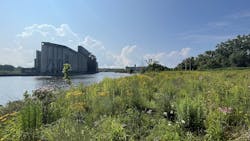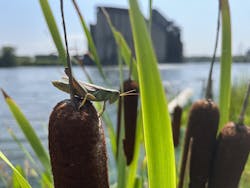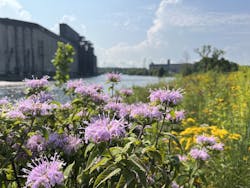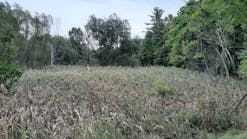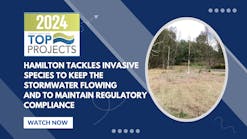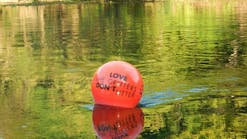Buffalo River Area of Concern habitat restoration complete
The U.S. Army Corps of Engineers (USACE) Buffalo District announced completion of the habitat restoration project along the Buffalo River near Katherine Street in Buffalo, New York.
The $2.7 million project, funded by the U.S. EPA’s Great Lakes Restoration Initiative, was the final habitat restoration project required to complete management actions before delisting the Buffalo River Area of Concern (AOC). Steps still remain before the AOC can be fully delisted, but the completion of this final habitat restoration project brings the area significantly closer to delisting.
“EPA is delighted to see the Katherine Street habitat restoration project come to completion,” said Teresa Seidel, director of the EPA Great Lakes National Program Office. “This successful project marks the last piece of the puzzle needed on the Buffalo River AOC. Ongoing environmental monitoring in the AOC will measure remediation and restoration progress to ultimately delist the AOC.”
The Buffalo River Area of Concern
The Buffalo River is an Area of Concern designated as part of the Great Lakes Water Quality Agreement, where natural habitat has been lost or degraded by development supporting industrial and commercial activities.
Over the decades, much of the shoreline’s natural cover and vegetation have been removed, bank slopes have been altered or eliminated, and aquatic plant beds and wetland ecosystems have been reduced.
Following closeout of the Katherine Street project, environmental monitoring continues, bringing the Buffalo River AOC one step closer to being delisted.
Four remaining Beneficial Use Impairments must be removed before the AOC can be delisted:
- Restrictions on fish and wildlife consumption
- Degradation of fish and wildlife populations
- Fish tumors or other deformities
- Bird or animal deformities or reproduction problems
Once environmental monitoring has shown that the restoration targets for the remaining four BUIs have been met, DEC will initiate the process of formally delisting the AOC.
Katherine Street Project Details
Planning for Katherine Street began in 2017 under the authority of the Economy Act.
A contract for implementation was awarded in May 2019 to Scott Lawn Yard, Inc. of Niagara Falls, and work began that summer.
Structural components of the project were completed in fiscal year 2019, concluding one of 20 habitat restoration projects funded by the GLRI for a total of $22 million. Combined, these projects restored almost 20,000 linear feet of shoreline to a more natural state with gently sloping banks and native aquatic vegetation.
Over the course of more than four years, earthwork, planting, invasive species treatment, and monitoring resulted in 3.6 acres of renewed, healthy, emergent and riparian habitat along 1,860 feet of the river’s northeastern shoreline.
Major steps in the project included:
- Removal of large swaths of knotweed, a non-native, non-beneficial plant species.
- Smooth sloping of the once-steep shoreline to slow erosion.
- Addition of natural structured habitat features, including logs, stone, timber piles, and reef balls to protect the shoreline and create areas for spawning by aquatic species and growth of sub-aquatic plants.
- Five years of invasive plant species treatment and installation of a barrier trench to prevent invasive plants from returning.
- Three years of planting:
- 40 trees from nine different varieties
- 3,102 individual plants (known as plugs)
- 4,211 one-gallon bucket shrubs
Prior to the restoration, the site was dominated by only a few invasive species, including Japanese knotweed and Tree-of-Heaven. Invasive plant species have been drastically reduced to less than 10% in most areas, and plant biodiversity has increased, with 150 native and naturalized species observed in 2023.
The site now consists of three distinct habitat types: aquatic shoreline, riverbank floodplain, and an upland meadow.
Along the water, a mix of aquatic plants can grow in previously unvegetated areas, thanks to protection provided by the newly installed locked logs and rock sills.
Upslope, the riverbank is now dominated by a mix of native grasses and herbs with patches of shrubs and trees.
The highest elevation areas are now an upland meadow.
These habitats provide valuable forage and refuge habitat for insects, fish, mammals, migratory birds, and other aquatic organisms.
Going forward, the established, primarily native plant community is anticipated to transition into a mature forest and shrubland area.
With the project now complete, the EPA will provide a manual for continued maintenance and stewardship of the site to Messer LLC.
